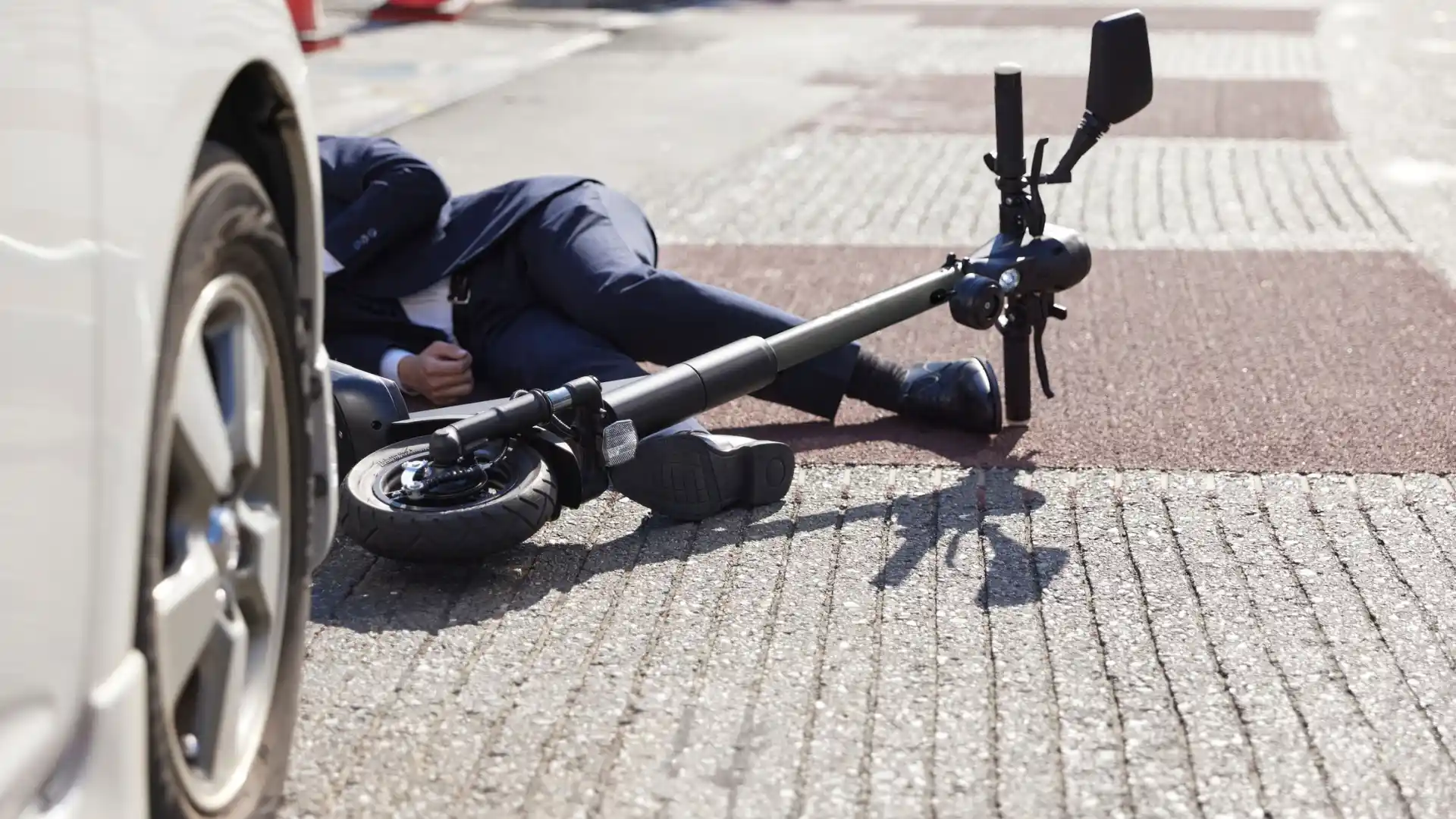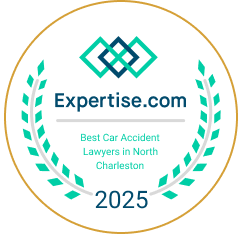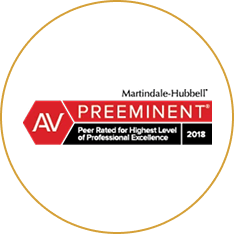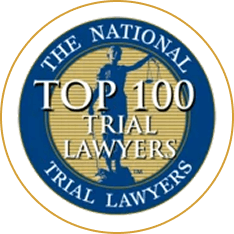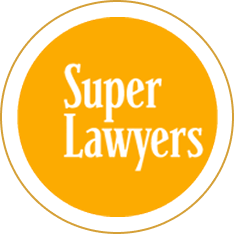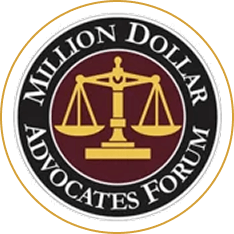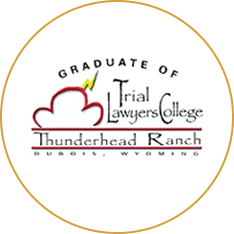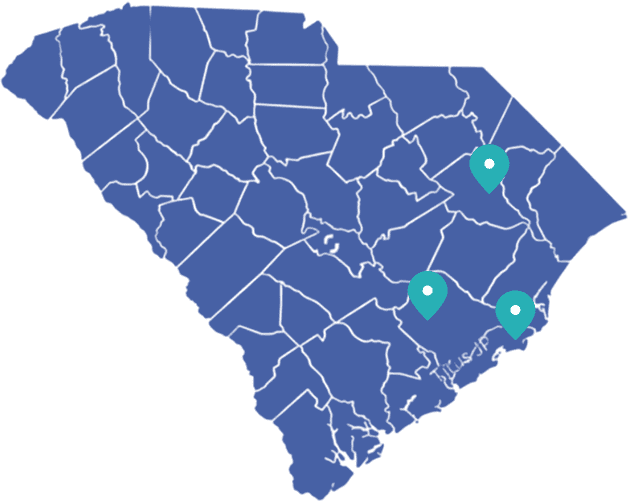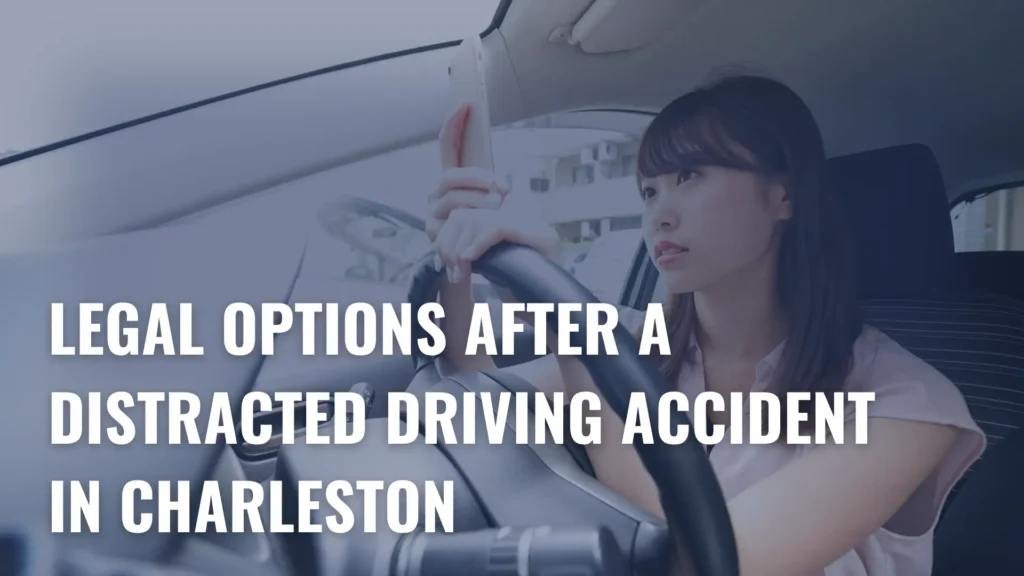
If you’ve been injured in a distracted driving accident in Charleston, you face a challenging situation that demands immediate attention and strategic action. Distracted driving causes thousands of accidents annually in South Carolina, and understanding your legal options is crucial for protecting your rights and securing the compensation you deserve.
The attorneys at Crantford Meehan understand the devastating impact of distracted driving accidents and are committed to helping you recover the compensation you deserve. Contact us at (843) 832-1120 or schedule a free consultation online.
Understanding Distracted Driving Under South Carolina Law
Distracted driving occurs when a driver diverts attention from the road to engage in another activity. South Carolina Code Section 56-5-3890 specifically prohibits texting while driving, making it illegal for drivers to compose, send, or read text messages while operating a vehicle. However, distracted driving extends far beyond texting.
As of September 1, 2025, South Carolina’s Hands-Free and Distracted Driving Act significantly expanded the law beyond texting to include holding or supporting mobile devices, watching motion on devices, and other distracted driving behaviors. This comprehensive legislation demonstrates the state’s commitment to reducing accidents caused by driver inattention. Understanding these texting while driving laws helps victims understand how the at-fault driver violated their duty of care.
Types of Distracted Driving
The CDC categorizes distracted driving into three types: visual distractions (taking your eyes off the road), manual distractions (taking your hands off the wheel), and cognitive distractions (taking your mind off driving). Common examples include texting, talking on a cell phone, eating, adjusting GPS systems, grooming, and interacting with passengers.
What makes distracted driving particularly dangerous is that it impairs a driver’s ability to react to hazards. According to the South Carolina Department of Insurance, texting while driving is six times more dangerous than driving under the influence. When a driver checks a text message at 55 miles per hour, their vehicle travels the length of a football field without their attention on the road—a distance in which a serious accident can easily occur. This is why proving negligence in car accidents requires strong evidence of distraction.
How Distracted Driving Differs From Other Negligent Driving
While all negligent driving can result in accidents, distracted driving carries distinct legal implications in South Carolina. Under the state’s comparative negligence doctrine, a plaintiff can recover damages even if partially at fault, as long as they are less than 50% responsible for the accident. Proving distracted driving strengthens your case significantly.
Breach of Duty
Distracted driving demonstrates a clear breach of the duty of care that all drivers owe to others on the road. Unlike accidents caused by poor weather or mechanical failure, distracted driving results from a driver’s conscious choice to engage in an activity other than driving.
This distinction matters in court because it shows deliberate negligence rather than unavoidable circumstances. Rear-end collisions, which are frequently caused by distracted driving, often result in serious injuries.
Additionally, distracted driving differs from reckless driving charges, which are criminal matters. While a driver might face criminal charges for reckless driving, you can pursue a separate civil personal injury claim to recover damages for your injuries and losses.
Proving Distracted Driving in Your Accident Claim
Successfully proving distracted driving requires gathering compelling evidence. Several types of evidence can demonstrate that the other driver was distracted at the time of the accident:
Cell Phone Records
Cell phone records obtained through discovery can show whether the driver was texting, calling, or using apps at the moment of impact. Eyewitness testimony from people who saw the accident can corroborate claims that the driver appeared distracted. Police reports often document observations made at the scene, including whether the driver admitted to using their phone. Understanding how to read an accident report helps you identify key evidence of distraction.
Vehicle Event Data Recorders
Vehicle event data recorders (EDRs), commonly called “black boxes,” capture data about vehicle speed, braking, and steering in the seconds before a crash. The role of black box data in truck accident cases demonstrates how this technology proves driver behavior. Surveillance footage from nearby businesses, traffic cameras, or residential properties can provide visual evidence of the driver’s behavior. Expert witness testimony from accident reconstruction specialists can analyze the accident dynamics and support conclusions about distracted driving.
Social Media
Social media evidence can also prove valuable—posts made around the time of the accident or admissions by the driver can demonstrate distraction or negligence. Evidence needed to prove your claim includes all these types of documentation.
Types of Compensation Available in Distracted Driving Cases
If you’ve been injured in a distracted driving accident, you may recover several categories of damages:
Medical Expenses
Medical expenses include all costs associated with treating your injuries—emergency room visits, hospitalization, surgery, physical therapy, and ongoing medical care. Understanding treatment costs from car accidents helps you calculate your full recovery. Lost wages compensate you for income lost while recovering from your injuries, and in cases of permanent disability, you can recover loss of earning capacity. Calculating lost wages ensures you receive full compensation for your economic losses.
Pain and Suffering
Pain and suffering damages address the physical pain and emotional distress caused by your injuries. Property damage covers the cost of repairing or replacing your vehicle. In fatal accidents, surviving family members can pursue wrongful death claims to recover funeral expenses, lost financial support, and loss of companionship.
Punitive Damages
In cases involving egregious conduct, courts may award punitive damages designed to punish the defendant and deter similar behavior. While South Carolina limits punitive damages in many cases, they may be available when the defendant’s conduct was particularly reckless or intentional. Understanding how pain and suffering damages are calculated helps you understand your full compensation potential.
Insurance Claims vs. Personal Injury Lawsuits
After a distracted driving accident, you typically have two paths to recovery: filing an insurance claim or pursuing a personal injury lawsuit. Most accident victims begin with an insurance claim against the at-fault driver’s liability coverage. This process involves reporting the accident, providing documentation, and negotiating a settlement with the insurance company.
Filing an Insurance Claim
Insurance settlements can often fall short of full compensation. Insurance companies employ adjusters trained to minimize payouts, and their initial offers rarely reflect the true value of your claim. Dealing with insurance adjusters after a car accident requires strategic communication to protect your rights. Pursuing a personal injury lawsuit becomes important when settlement negotiations stall.
Filing a Personal Injury Lawsuit
South Carolina’s statute of limitations gives you three years from the date of the accident to file a lawsuit. This deadline is critical—missing it eliminates your right to recover through the court system. An experienced attorney can evaluate whether settlement negotiations have stalled and determine whether litigation is necessary to maximize your recovery. Understanding what to expect when filing a car accident lawsuit in South Carolina helps you prepare for the legal process.
No Fees Unless You Win
Many personal injury attorneys, including those at Crantford Meehan, work on a contingency fee basis, meaning you pay no upfront costs. The attorney’s fee comes from your recovery, aligning their interests with yours. How car accident settlements work explains the process from claim to resolution.
Common Injuries From Distracted Driving Accidents
Distracted driving accidents often result in serious injuries because the driver has no time to brake or take evasive action.
- Whiplash and soft tissue injuries occur when the neck and back are suddenly jerked, causing strain to muscles and ligaments.
- Head injuries and traumatic brain injuries (TBIs) range from concussions to severe brain trauma affecting cognitive function and memory.
- Dealing with head injuries after a car accident provides guidance on recovery and compensation.
- Spinal cord injuries can result in partial or complete paralysis, fundamentally altering a victim’s life. Broken bones and fractures require surgery and extended rehabilitation. Internal injuries such as organ damage or internal bleeding may not be immediately apparent but can be life-threatening.
- Dealing with delayed injuries after a car accident explains why medical attention is critical even when injuries aren’t immediately obvious.
Beyond physical injuries, accident victims often experience psychological trauma, including post-traumatic stress disorder (PTSD), anxiety, and depression. Claiming compensation for PTSD from an accident ensures you recover for emotional injuries. These injuries require ongoing treatment and can significantly impact quality of life.
Steps to Take Immediately After a Distracted Driving Accident
Your actions immediately following an accident can significantly impact your case. First, document the scene by:
- Taking photographs of vehicle damage, road conditions, traffic signals, and the overall accident scene.
- Obtain witness contact information from anyone who saw the accident—their testimony may prove invaluable later.
- Asking the right questions to car accident witnesses ensures you gather critical information.
- Request a police report and obtain the report number. The police report documents the officer’s observations and may include statements from the other driver.
- Seek medical attention promptly, even if you feel fine—some injuries develop over hours or days, and medical records establish the connection between the accident and your injuries.
- Speaking with doctors after an accident helps ensure proper documentation of your injuries.
- Preserve cell phone records by requesting that the other driver’s phone records be preserved and by documenting your own phone use (or lack thereof) at the time of the accident.
- Contact an attorney before speaking with insurance companies. Insurance adjusters may use your statements against you, and an attorney protects your rights during these conversations. Protecting yourself from insurance companies is essential to maximizing your recovery.
Why You Need a Distracted Driving Accident Attorney in Charleston
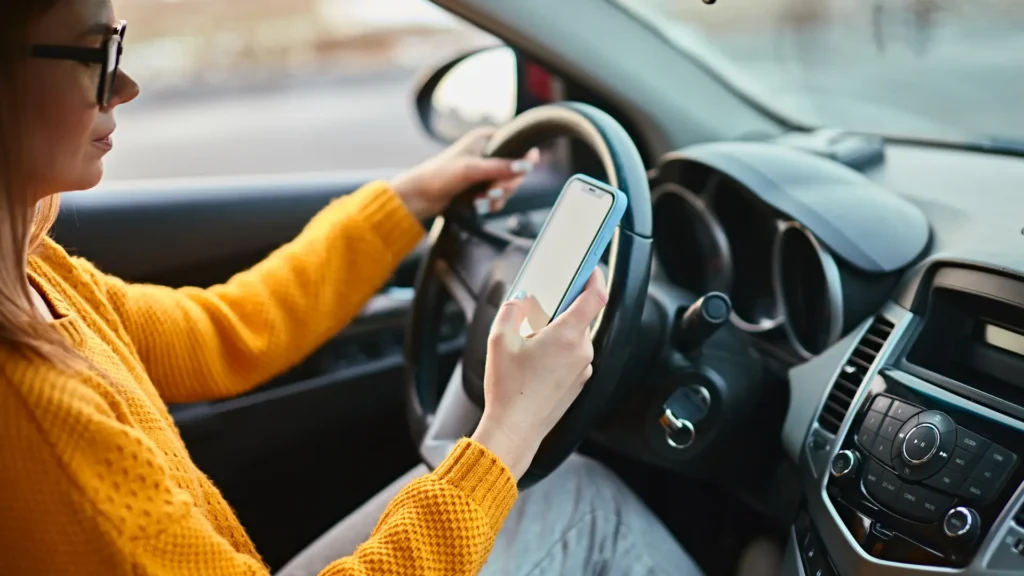 Handling a distracted driving accident claim requires legal knowledge and experience. An attorney brings local knowledge of South Carolina law, understanding how courts in Charleston and surrounding areas handle distracted driving cases.
Handling a distracted driving accident claim requires legal knowledge and experience. An attorney brings local knowledge of South Carolina law, understanding how courts in Charleston and surrounding areas handle distracted driving cases.
Experience and Legal Knowledge
They have experience negotiating with insurance companies, knowing their tactics and how to counter them effectively. What car accident lawyers do explains the comprehensive services attorneys provide.
Trial Advocacy
If settlement negotiations fail, your attorney provides trial advocacy to present your case before a judge or jury. Attorneys at Crantford Meehan, including partners William C. Crantford and Jerry A. Meehan Jr., are both Trial Lawyers College graduates with significant trial experience. Their credentials—including AV Preeminent ratings from Martindale-Hubbell and recognition from Super Lawyers and Best Lawyers—demonstrate their commitment to client advocacy.
An experienced attorney handles all legal details, from discovery to expert witness coordination, allowing you to focus on recovery. Most importantly, they work to maximize your compensation by thoroughly documenting damages, building a compelling case, and negotiating aggressively on your behalf. Three reasons to hire an attorney after an accident outlines the key benefits of legal representation.
Client Recovery
Crantford Meehan has recovered millions for accident victims, including a $2.35 million settlement in a tractor-trailer rear-end collision case and a $1 million settlement for clients struck by an 18-wheeler on I-26. These results demonstrate the firm’s ability to secure substantial compensation for seriously injured clients. View Crantford Meehan‘s case results and settlements to learn more about our track record.
Frequently Asked Questions
What counts as distracted driving in South Carolina?
Distracted driving includes texting, talking on a cell phone, eating, adjusting GPS systems, grooming, and any other activity that diverts your attention from driving. South Carolina law specifically prohibits texting while driving. Understanding the types of distracted driving helps you recognize when another driver’s conduct was negligent.
How long do I have to file a lawsuit after a distracted driving accident?
South Carolina’s statute of limitations is three years from the date of the accident. Missing this deadline eliminates your right to pursue a lawsuit. Understanding the statute of limitations for car accident lawsuits explains this critical deadline.
Can I recover compensation if I was partially at fault?
Yes. South Carolina follows comparative negligence rules, allowing you to recover damages as long as you are less than 50% responsible for the accident. Your recovery is reduced by your percentage of fault. Understanding comparative fault in multi-car accidents explains how this doctrine applies to your case.
What evidence proves the other driver was distracted?
Cell phone records, eyewitness testimony, police reports, vehicle event data recorders, surveillance footage, and expert witness testimony can all demonstrate distracted driving. Key evidence needed to prove fault details the types of documentation that strengthen your claim.
How much is my distracted driving accident case worth?
Case value depends on factors including injury severity, medical expenses, lost wages, pain and suffering, and the strength of evidence. An attorney can evaluate your specific circumstances. How to get the most out of your personal injury settlement provides guidance on maximizing your recovery.
Do I need an attorney for a distracted driving accident claim?
While not required, an attorney significantly increases your chances of obtaining fair compensation. Insurance companies often undervalue claims, and attorneys negotiate more effectively on your behalf. How to deal with insurance companies in a personal injury claim explains why professional representation matters.
What if the distracted driver doesn’t have insurance?
Your own uninsured motorist (UM) coverage may provide protection. An attorney can help you pursue this coverage and explore other recovery options. How to handle a car accident with an uninsured driver outlines your legal remedies.
Contact Crantford Meehan for Your Free Consultation
If you’ve been injured in a distracted driving accident in Charleston, don’t handle the legal process alone. The attorneys at Crantford Meehan understand the devastating impact of distracted driving accidents and are committed to helping you recover the compensation you deserve.
Contact our legal team 24/7 for more information, a free case review, and more. You can call (843) 832-1120 or contact us online. Our testimonials demonstrate our commitment to serving the personal injury clients of South Carolina. We are dedicated to getting justice and compensation for the Charleston community.



